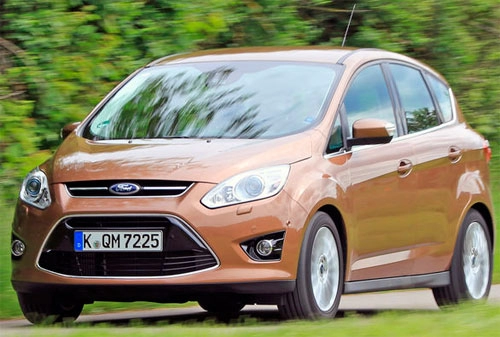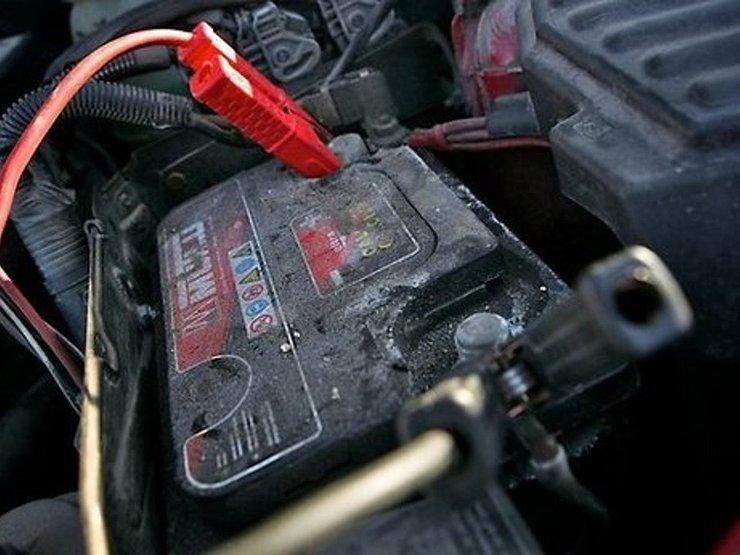
Test Brief: Ford C-Max 1.0 EcoBoost (92 kW) Titanium
A liter of working volume, although it helps with accelerated breathing, is a big piece for a car weighing at least one and a half tons. Especially when you consider that only three pistons need to roll up their sleeves, and not four, as is usually the case with most family minivans.
But let's first write that there was no need for fear. We did have a more powerful version in the test, which with 92 kilowatts (or more than 125 domestic "horsepower") works much easier than a weaker machine with only 74 kilowatts (100 "horsepower"), but it does not have a small font. engine: really good. By that we mean it's smooth because you only feel the specific sound of the three-cylinder engine, but you don't hear it, and only in a certain range of speeds is it flexible and very sharp. The last two statements are the biggest surprises.
The thing is, making a bouncy three-cylinder isn't all that difficult. The turbo can be bigger than the engine, you are winding up the electronics and you can be sure that despite the huge turbo bore (or even without it, if the latest technology is used), the front drive wheels will suffer from traction. But would your family car have such an engine? Well, so are we, so it's important to keep in mind that the engine is quiet, flexible, dynamic enough and above all economical enough and with emissions that satisfy the Brussels bureaucrats. And that it suits dynamic fathers, after all, we are talking about Ford, as well as caring mothers who just want to safely bring their children home from kindergarten and school. It's hard to do.
Ford clearly succeeded. We will not list the many accumulated awards that should roam the tables of strategists, engineers and, of course, bosses who generally approved such a project. But it is these awards that prove that the era of small three-cylinder engines did not end after World War II, but they can be a very useful innovation with modern technology. And you can believe me, I was also one of those skeptics who didn't believe in such a drastic reduction in displacement (also known as "downsizing") even after testing the Fiat engine. However, from Ford's experience, I regretfully admit that the fears were unfounded.
We have already said that the three-cylinder engine is very quiet and smooth in vibration. Whether the good sound insulation of the C-Max also helps is not as important as the fact that at the end of the day the children fall asleep from a fairy tale, and not from the noise of the engine, which is trying to overcome, say, the Vrhnik slope.
An even bigger surprise was the engine's flexibility. You expect the shifter to reach more often than larger engines, but look at the share: the engine pulls so well at lower rpm that 95 percent of drivers will not notice the difference between this engine and the one that the engineers say its a direct competitor is the naturally aspirated 1,6-liter four-cylinder engine. While a Ford with a traditionally fast and precise transmission wouldn't have major issues with the extra shifting, the extra work of the driver's right hand really isn't required.
“Okay, let's test this engine before we get there,” we said to ourselves, and took him on another walk called the Normal Circle. A third of highway driving, a third of highway driving, and a third of city traffic with speed limits will show you if maneuverability and flexibility are just a trick to deliver more fuel.
You know, before the usual circle, I had a story in my head that the engine is good, but consumes too much. To this I was forced by the consumption in the city, which ranged from eight to nine liters per 100 kilometers. And if you're not entirely thrifty on gas, expect the same mileage on the three-cylinder C-Max, at least if you're going to be driving with winter tires mostly around town, which requires a faster pace of driving.
Yes, I mean Ljubljana, as the traffic flow in Nova Gorica or Murska Sobota is at least twice as slow. But the on-board computer showed only 5,7 liters of average consumption on a regular circle after driving in the city, and at the end of a very leisurely drive, we measured only 6,4 liters. Hey, for a car this big, this is more than a good result in winter conditions, which suggests that a 1,6-liter four-cylinder can easily outperform a classic XNUMX-liter four-cylinder engine, as well as chase turbo diesel mileage.
The variable operation of the oil pump, the delayed crankshaft, the exhaust manifold and the extremely responsive turbocharger, which can rotate up to 248.000 times per minute, obviously work together perfectly. It's no secret that there is no such pleasure behind the wheel as with the torque of a turbodiesel. So let's wrap up the story of the kid under the hood by saying that he is great, but (logically) still not as interesting as a larger gasoline or turbodiesel engine. You know, size matters ...
If you are not completely spoiled, you will be completely satisfied with the C-Max size, even if you have two children. The chassis is a good compromise between dynamics and comfort, the transmission (as we already wrote) is excellent, the driving position is indulgent. We also indulged in the Titanium equipment, especially the heated windshield (very useful in winter and obviously in spring when it snows again at the end of March), semi-automatic parking (you only control the pedals and the steering wheel is controlled by very precise electronics), keyless start (Ford Power) and hill assist.
That the 1.0 EcoBoost is by far the best three-cylinder on the market is beyond question, but the question is whether you need it. With a little more, you get a turbo diesel that's louder and more polluting (particulate matter), but still (
Text: Aljosha Darkness
Ford C-Max 1.0 EcoBoost (92 kW) Titanium
Basic data
| Sales: | Auto DOO Summit |
|---|---|
| Base model price: | 21.040 € |
| Test model cost: | 23.560 € |
| Calculate the cost of auto insurance | |
| Acceleration (0-100 km / h): | 11,5 with |
| Maximum speed: | 187 km / h |
| Mixed flow ECE: | 7,9l / 100km |
Technical information
| engine: | 3-cylinder - 4-stroke - in-line - turbocharged petrol - displacement 999 cm3 - maximum power 92 kW (125 hp) at 6.000 rpm - maximum torque 200 Nm at 1.400 rpm. |
|---|---|
| Energy transfer: | front wheel drive engine - 6-speed manual transmission - tires 215/50 R 17 W (Michelin Primacy HP). |
| Capacity: | 187 km/h top speed - 0-100 km/h acceleration in 11,4 s - fuel consumption (ECE) 6,3/4,5/5,1 l/100 km, CO2 emissions 117 g/km. |
| Mass: | empty vehicle 1.315 kg - permissible gross weight 1.900 kg. |
| External dimensions: | length 4.380 mm – width 1.825 mm – height 1.626 mm – wheelbase 2.648 mm – trunk 432–1.723 55 l – fuel tank XNUMX l. |
Our measurements
| T = 3 ° C / p = 1.101 mbar / rel. vl. = 48% / odometer status: 4.523 km | |
| Acceleration 0-100km: | 11,5s |
|---|---|
| 402m from the city: | 17,8 years ( 124 km / h) |
| Flexibility 50-90km / h: | 9,0 / 13,8s (IV/V) |
| Flexibility 80-120km / h: | 11,5 / 15,8s (Sun./Fri.) |
| Maximum speed: | 187km / h (WE.) |
| test consumption: | 7,9 l / 100km |
| Braking distance at 100 km / h: | 41,2m |
| AM table: | 40m |
evaluation
The three-liter engine also proved its worth in the larger C-Max. If you want a gasoline engine and at the same time lower fuel consumption (assuming a reasonably quiet driving experience, of course), there's no reason EcoBoost shouldn't be at the top of your wishlist.
We praise and reproach
engine (for small three-cylinder)
chassis
six-speed manual transmission
driving position
equipment, ease of use
flow rate in a circle of rates
consumption during dynamic city driving
it has no longitudinal movement of the rear seats
price

